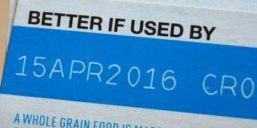How can you make the most of your summer for SAT prep? Make a Great Plan!
Our series on Summer SAT prep continues with Part 2 of our step-by-step guide.
In Part 1, we discussed Assessing your Strengths and Weaknesses (Step 1) and Setting Score Goals (Step 2). Now we’ll talk about how to use that information to make a great plan (Step 3).
Step 3: Make a Great Plan
Many teens and adults struggle with creating plans they can realistically carry out. But SAT preparation is a great opportunity to turn that around: it’s important, it’s measurable, and it’s in your control.
How can you design a summer SAT prep plan that will work for you?
-
Identify your time constraints.
What are the conditions you will have to work within?
- Time: How much time each week can you dedicate to SAT preparation? How will you work around family holidays, camps, classes, or other summer commitments that you have?
- Test Date: On which date(s) will you take the exam? We’ve listed the SAT International Test Dates for 2019-2020 below. If you will apply to begin university in Fall 2020, keep in mind that the December exam is the last one you could use to send to most US universities for Regular Decision, while the October exam would be the last one for Early Decision or Early Action.
SAT International Test Dates 2019-2020
| Test Date | Registration Deadline | Score Release Date |
|---|---|---|
| Oct 5, 2019 | Sept 6, 2019 | Oct 18, 2019 |
| Dec 7, 2019 | Nov 8, 2019 | Dec 20, 3019 |
| Mar 14, 2020 | Feb 14, 2020 | Mar 27, 2020 |
| May 2, 2020 | Apr 3, 2020 | May 15, 2020 |
-
Make sure your skills will last.
Remember that summer prep is more like a marathon than a sprint. You are working to build knowledge and skills that will stay fresh until you take the exam, which may be in several months.

Have you ever noticed that when you wait until the last minute to study for an exam, you often forget a lot of the material soon after the test? Educational research shows that we typically retain knowledge and skills longer when we review information some time later than we learned it (as opposed to reviewing immediately after we learn). On each new occasion that you ask your brain to retrieve the information, you strengthen the mental connections – and if you space out those occasions over a period of weeks, it’s likely that the connections will last longer. This is the idea of distributed practice and it’s important for preparing for exams that are weeks and months in the future.
What does this mean for your summer SAT prep? Incorporate opportunities for mixed practice throughout your practice calendar.

Bright Tip: Include official practice tests in your summer study plan. Space them at least a few weeks apart, so they will allow you to track your progress and provide a form of distributed practice to help you retain your skills longer.
-
Create process and outcome goals that are SMART.
For SAT prep, we suggest making both process goals about how much and how often to study as well as outcome goals about the end result: your score target.
Your process goals should be informed by points 1 and 2 above, and your outcome goals should be based on the score goal setting we discussed in our previous blog post.
Next, make your goals S.M.A.R.T. This acronym gives us a great way to remember how to turn dreams into real action plans. Each goal should be:
Specific: Describes exactly what you want to accomplish
Measurable: Defined in a way that you can track your progress and know if/when you have achieved it. (Could be points on your score, hours studied, number of practice tests taken)
Attainable: Represents something you can realistically accomplish given the time and resources you have
Relevant: Connects to your bigger goals for yourself and your future
Time-limited: Includes one or more deadlines to help you keep on track
For example, you might start with the idea: “I want to improve my SAT score.”
How can you make that goal SMARTer?
Specific: What is your specific score target? (See our previous post for details about setting your score target.)
Measurable: Luckily, scores are already measurable – including your practice tests and the actual SAT exams you take.
Attainable: Moving 100 or 200 points is doable if you carry out a good study plan and keep an Error Log. It is also possible to improve by more than 200 points, but you’ll likely want to get guidance from an SAT expert about a realistic timeline and strategy for this level of improvement.
Relevant: Is this score target appropriate for your targeted universities? Does it connect to your plans for your future?
Time-limited: When are you planning to sit for the SAT?
So, based on SMART, you might revise this outcome goal to be:
“I want to improve my SAT score from 1250 to 1350 by the October 5 exam.”
You could also create process goals:
“I aim to study for the SAT for 8 hours per week in July and August and 4 hours per week in September.”
“I plan to take 2 practice tests per month in July and August and 3 practice tests in September. My goal is to reach at least a 1350 on at least one of my September practice tests.”

Bright Tip: Create at least one outcome goal and two process goals for your plan. This will help you clarify what you want to achieve and how you aim to achieve it!
We’ve discussed some of the key aspects of making a great summer SAT study plan: identifying your time constraints, ensuring your skills will last, and creating SMART process and outcome goals.
In the next part of our series, we’ll discuss the best resources to use for your preparation, including websites and books.






